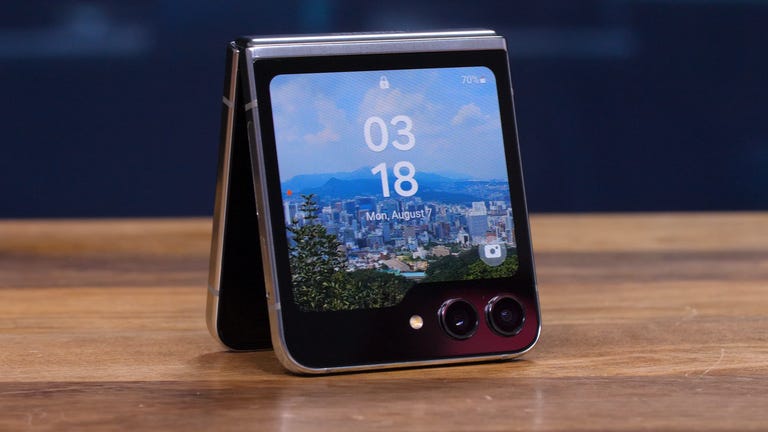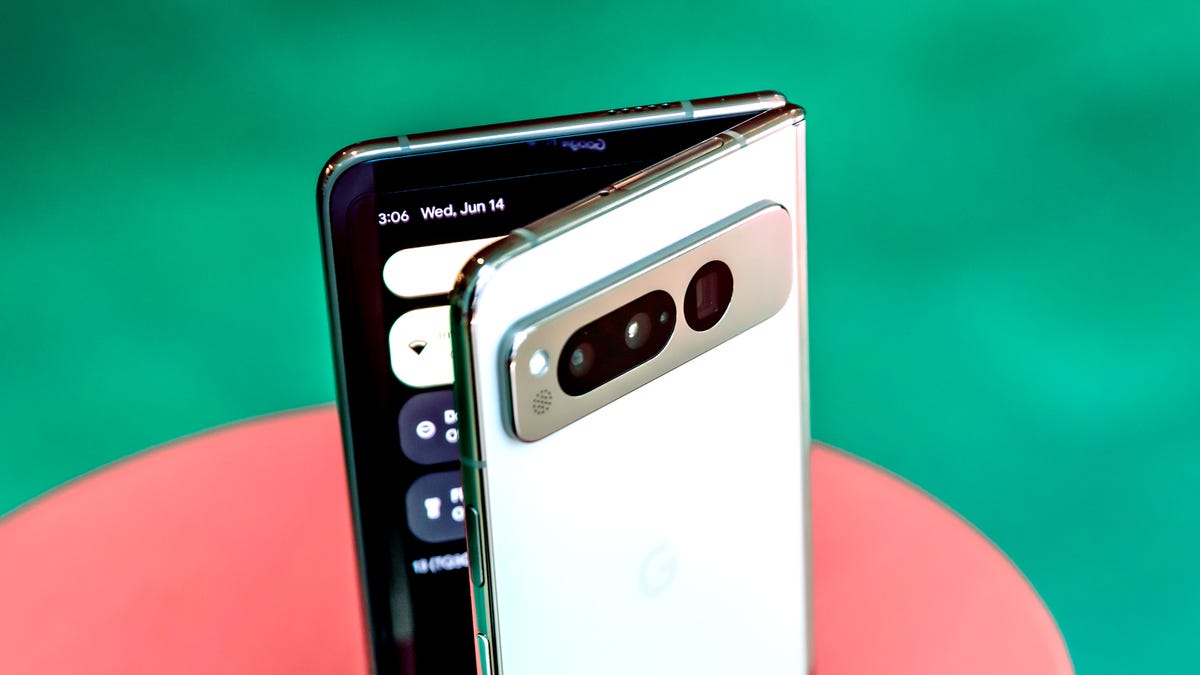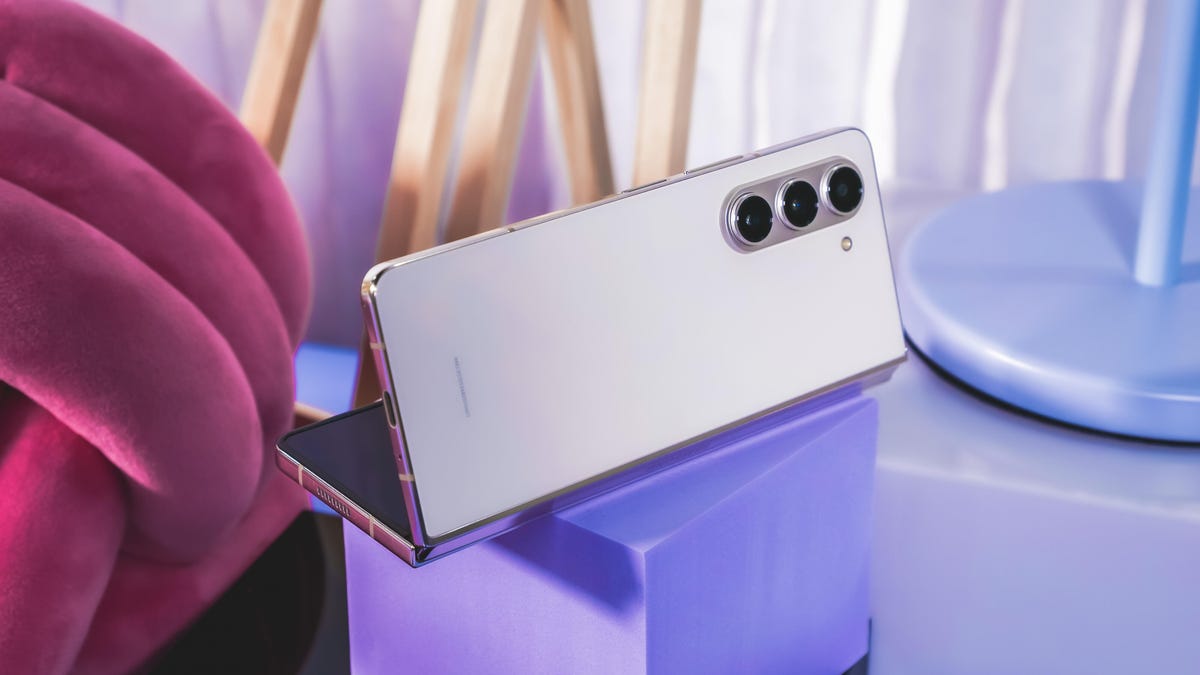Foldable phones were seemingly everywhere in 2023. Google and OnePlus released their first bendable devices. Motorola and Samsung leveled up their flip phones with larger external screens, making them more useful. And with its $700 2023 Razr, Motorola attempted to fight the notion that foldable phones need to break the bank.
While 2023 was an unexpected period of change for foldables, despite sales actually falling below expectations, 2024 will likely be quieter. Motorola already announced its new crop of Razrs for 2024, complete with larger cover screens and better cameras. Samsung is widely expected to introduce new versions of the Galaxy Z Fold and Z Flip during its Unpacked event on July 10, and there are rumblings of a second-gen Pixel Fold. But these devices from Samsung and Google are expected to be iterative updates that improve on key areas like design and performance, rather than widespread updates that expand what foldables are truly capable of.
That’s not necessarily a negative. Flip phones evolved in 2023, and 2024 will likely be about further polishing what’s worked in the past. However, I’m hoping to see companies like Samsung and others work toward addressing two of the biggest shortcomings of today’s foldables: high prices and a lack of compelling software.
Read more: I Visited Samsung’s Home Turf to See If Foldable Phones Are Really the Future

Watch this: Samsung Galaxy Z Flip 5 Review: Flip Phones Are Cool Again
Which foldable phones we’re expecting in 2024

Google’s Pixel Fold may get a sequel.
Brands like Motorola, Honor, Vivo and ZTE’s Nubia already launched foldable phones in 2024, but Samsung and Google typically release new devices later in the year. While nothing is certain until it’s announced, here’s what we’re expecting based on rumors, leaks and previous launches.
- Samsung Galaxy Z Fold 6: Samsung’s next book-style foldable will likely get a new processor and some camera tweaks to more closely match the Galaxy S24 family. We’re also expecting Galaxy AI to be a major area of focus, as Samsung hinted in the press release announcing its next Unpacked event. Samsung may also expand the size of the Galaxy Z Fold 6’s cover screen, according to the serial leaker Ice Universe. A Samsung patent has also fueled speculation that Samsung may finally add a slot for the S Pen this time around, just as it has for the Galaxy S Ultra series. But what’s perhaps more interesting is the idea that Samsung could release a cheaper version of the Galaxy Z Fold, as Korean news outlet The Elec reports. A high-end Ultra version of the Galaxy Z Fold 6 could also be in the works, according to the blog Galaxy Club.
- Samsung Galaxy Z Flip 6: Similar to the next Z Fold, Samsung’s next flip phone will also likely get a processor refresh and a dose of Galaxy AI. But the blog Galaxy Club reports that a big camera upgrade may be in store for the Z Flip 6 that would bump up the main camera resolution from 12 to 50 megapixels. The website also predicts the Z Flip 6 will have a slightly larger battery than the Z Flip 5. Both the Galaxy Z Flip 6 and Z Fold 6 will also likely come with Galaxy AI, a new suite of AI-powered software features that Samsung debuted on the Galaxy S24 series earlier this year.
- Google Pixel Fold 2: Google may be working on a larger screen for the next Pixel Fold. Ross Young, CEO of Display Supply Chain Consultants, reports that the internal foldable display will measure 8.02 inches, representing a jump from the current Pixel Fold’s 7.6-inch internal screen. The cover screen also sounds like it will be slightly larger, with Young predicting a 6.29-inch external display is in store. Otherwise, we can probably expect the Fold 2 to have Google’s next-generation Tensor chip. Google is reportedly considering rebranding the next version of the Pixel Fold as the Pixel 9 Pro Fold, according to Android Authority, which would create some consistency between Google’s foldable and flagship smartphone lineup. Google is holding a Pixel-focused event on Aug. 13, so there’s a chance we may learn about a new Pixel Fold as soon as next month.
- OnePlus Open 2: There haven’t been many leaks or rumors about a sequel to the OnePlus Open yet. But if OnePlus does make its foldable phone a regular part of its lineup, the second-gen model likely wouldn’t arrive until October. The OnePlus Open impressed CNET’s Eli Blumenthal with its sleek design, but we’re hoping to see superior cameras and improved software on a future model.
Potential foldable phone trends in 2024

It’s impossible to know exactly what to expect from new foldables in 2024 until these new models arrive in the market. But based on leaks and general smartphone industry trends, it seems like phone-makers will focus more on lowering prices, improving designs and updating their devices with more powerful hardware to match today’s top non-folding phones.
There’s already some evidence to suggest companies may be working toward making foldable phones more affordable. ZTE, for example, launched the $600 Nubia Flip 5G at Mobile World Congress, which is cheaper than both the Galaxy S24 and iPhone 15. The Elec’s report about Samsung working on a lower-priced version of the Z Fold also aligns with that direction, although SmartPrix reports that Samsung plans to increase the Galaxy Z Fold 6’s price compared to last year’s phone.
It’s also possible that we’ll see interesting new software-based features on this year’s foldables. Samsung and Google are both focused on infusing artificial intelligence into their smartphone software in a more prominent way, as evidenced by Samsung’s set of Galaxy AI features and Google’s photo editing tools like Best Take and Magic Editor.
There’s an opportunity for smartphone-makers to get more creative when developing new software tricks for foldable phones. The whole appeal behind foldable phones centers on the idea of having two pocket-size screens that serve different purposes. Imagine if those screens were smarter and had interfaces that were better optimized for their respective sizes and intended use?
Samsung and Motorola are off to a good start with the Razr Plus and Galaxy Z Flip 5, both of which have widget-centric cover screens designed to convey information at a glance — much like a smartwatch. But I’m excited to see where companies take things next amid this renewed AI push.
Won-Joon Choi, executive vice president and head of the research and development office for Samsung’s mobile experience business, previously hinted that the company would tailor future Galaxy AI software features to specific devices in the future.
“Rather than just simply extending it, we want to come up with very specific … optimized experiences according to those form factors,” he said in a January interview. “Not just [a] copy and paste but enhancing the experience for those specific form factors.”
He reiterated that point in a blog post from June, saying that the company will “further optimize” Galaxy AI for its upcoming foldables.
In the meantime, Samsung just began rolling out a software update to the Galaxy Z Flip 5 and Z Fold 5 to bring its current Galaxy AI features to those devices.
What we’re not expecting in 2024
Motorola’s rollable phone concept magically extends its screen.
If you’re holding out for a foldable iPhone or a futuristic device with a rollable screen, don’t expect either one anytime soon.
Apple is famously late with new technologies, as was the case with large-screen phones, smartwatches and virtual reality headsets. If the company is planning to release a foldable iPhone, it likely won’t do so until there’s more demand for foldable phones. Devices that bend in half accounted for only about 1.4% of the global smartphone market in 2023, according to TrendForce. But as Counterpoint Research’s Tom Kang points out in a blog post, foldables could be important for companies that usually target premium phone shoppers — like Apple.
Given Apple’s focus on design, I also wouldn’t be surprised if the company waited until the crease problem has been solved before releasing a foldable. While designs have improved in recent years, the crease is still noticeable on both flip phones and book-style devices alike.
Apple has developed prototype foldable displays, according to Bloomberg’s Mark Gurman, but those are primarily for testing. There’s no indication that Apple plans to use such screens in an actual product yet, says the report, which is from 2021.
Motorola and Samsung, meanwhile, are already thinking about what may be next for foldable devices. Both companies have showcased fascinating concept devices with screens that roll and slide to change in size. However, such concepts are just that for now. There’s no telling when such prototypes will graduate to formal products, if ever.
But Jeff Snow, Motorola general manager of product innovation, thinks new types of designs like these could one day make phones more useful.
“I think people will look back one day and say, ‘I can’t believe that I was carrying around this 7-inch piece of glass in my pocket,'” he said in an interview last year. “The device is getting a little bit untenable for most people based on their mobile lives.”
All told, foldables will likely take small but meaningful steps forward this year. But we’ll know more as phone-makers announce new products in the coming weeks.





















+ There are no comments
Add yours